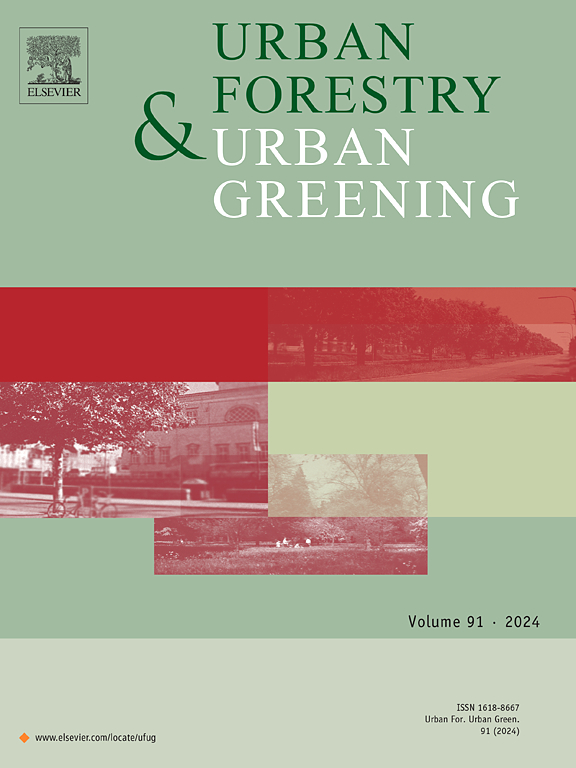街道景观植被的心理恢复效应:利用虚拟环境的各种设计策略的评估
IF 6
2区 环境科学与生态学
Q1 ENVIRONMENTAL STUDIES
引用次数: 0
摘要
虽然许多研究已经探索了自然环境的恢复作用,但我们对设计方法如何影响城市自然,特别是街景植被的理解仍然存在差距。为了解决这一差距,进行了一项虚拟现实实验,旨在评估城市环境中三种不同设计元素的恢复潜力:可达性(围栏或非围栏)、排列(规则或随机)和多样性(高或低)。参与者(N = 57)在两个虚拟环境中经历了基于这三个因素的八种情况。采用基于主观恢复三个维度的自我报告问卷进行评价。结果表明,无围栏、随机布置和多样性较高的生境比有围栏、规则布置和多样性较低的生境表现出更显著的恢复潜力。本研究深入探讨了设计策略对街道景观植被在加强恢复中的影响,强调了虚拟现实作为评估城市设计方案的工具的潜力。本文章由计算机程序翻译,如有差异,请以英文原文为准。
Mental restorative effects of streetscape vegetation: Assessment of various design strategies using virtual environments
While numerous studies have explored the restorative effects of natural environments, a gap in our understanding remains regarding how design approaches influence urban nature, particularly streetscape vegetation. A virtual reality experiment was conducted to address this gap, aiming to assess the restorative potential of three distinct design elements within an urban environment: Accessibility (fenced or not), Arrangement (regular or random), and Diversity (high or low). The participants (N = 57) experienced eight conditions based on these three factors in two virtual environments. The evaluations were obtained via a self-report questionnaire based on three dimensions of subjective restoration. The results revealed that the conditions without fences, arranged randomly, and with higher diversity exhibited more significant restorative potential than their counterparts with fences, regular arrangements, and lower diversity. This study provides insight into the influence of design strategies on streetscape vegetation in enhancing restoration, underscoring the potential of virtual reality as a tool for assessing urban design alternatives.
求助全文
通过发布文献求助,成功后即可免费获取论文全文。
去求助
来源期刊

Urban Forestry & Urban Greening
FORESTRY-
CiteScore
11.70
自引率
12.50%
发文量
289
审稿时长
70 days
期刊介绍:
Urban Forestry and Urban Greening is a refereed, international journal aimed at presenting high-quality research with urban and peri-urban woody and non-woody vegetation and its use, planning, design, establishment and management as its main topics. Urban Forestry and Urban Greening concentrates on all tree-dominated (as joint together in the urban forest) as well as other green resources in and around urban areas, such as woodlands, public and private urban parks and gardens, urban nature areas, street tree and square plantations, botanical gardens and cemeteries.
The journal welcomes basic and applied research papers, as well as review papers and short communications. Contributions should focus on one or more of the following aspects:
-Form and functions of urban forests and other vegetation, including aspects of urban ecology.
-Policy-making, planning and design related to urban forests and other vegetation.
-Selection and establishment of tree resources and other vegetation for urban environments.
-Management of urban forests and other vegetation.
Original contributions of a high academic standard are invited from a wide range of disciplines and fields, including forestry, biology, horticulture, arboriculture, landscape ecology, pathology, soil science, hydrology, landscape architecture, landscape planning, urban planning and design, economics, sociology, environmental psychology, public health, and education.
 求助内容:
求助内容: 应助结果提醒方式:
应助结果提醒方式:


